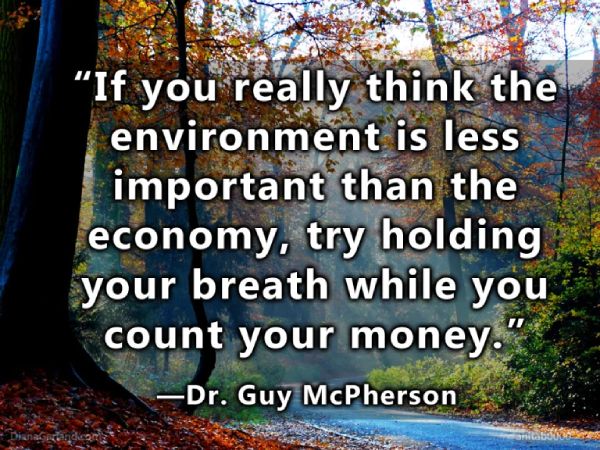One aspect of the climate change crisis, and indeed of environmental issues, that is underdiscussed is the connection between climate change, environmental destruction and human violence. However, from time to time the issue does receive some coverage in the mainstream media.
For example, a recent article in The Guardian, 17 December 2022 had the arresting title of “Almost 8,000 US shootings attributed to unseasonable heat – study.”
The article discussed a paper by Lyons et al. published in the JAMA Network Open, “Analysis of Daily Ambient Temperature and Firearms Violence in 100 US Cities.”
The study addressed the key question of whether higher ambient temperatures were associated with an increased risk of a shooting by a firearm in US cities; or in other words, does an increase in temperature result in an increase in firearms violence in the US?
Lyons et al. conducted a cross-section analysis of 100 US cities with the highest incidences of firearms shootings. It was found that 6.85 percent of shootings were associated with higher-than-average temperatures. It was hypothesised that climate change could be influencing US gun violence through producing higher than past average temperatures. While for various reasons, such as increased mobility and activity, US gun violence was higher in summer than in other months such as winter, Lyons et al. controlled for seasonality and showed that in any season there was a statistically significant increased risks of shootings due to temperature increases beyond the past average.
This study thus challenges past work which presented evidence that the climate-change-temperature-crime hypothesis was not confirmed by a study of 15 large US cities.1 Lynch et al. also observed that globally crime has declined since the 1990s, while climate change has accelerated. Yet, this merely shows that crime is a multi-dimensional social phenomenon, which is not solely caused by a physical environmental factor such as climate change. As noted by L. J. Shaffer, “resource uncertainty interacts with a complex array of pre-existing social and environmental conditions, including environmental degradation, poor governance, and social inequality, to promote violent responses both before and following climate change”.2
The Lyons et al. study confirms previous research on the relationship between temperature and aggression, and violence, particularly by leading researcher Professor Craig A. Anderson, Department of Psychology, Iowa State university. 3 Apart from warmer temperatures increasing time spent outdoors, increased alcohol consumption and increased frequency of social interactions, warmer temperatures may, according to one hypothesis discussed by Anderson and others, also increase the circulation of stress hormones in the body such as cortisol, lowering the thresholds for violent social encounters.
In addition, there is a further psychological dimension as noted by E. L. Lawrance , “The disruptive influence of rising global temperatures and extreme weather events, such as experiencing a heatwave, or water insecurity, compounds existing stressors experienced by individuals and communities. This has deleterious effects on people’s mental health.”4 It is reasonable to suppose in the light of this that some individuals could respond with violence due to these increased stresses and insecurities, with “normal” mechanisms of restrain being broken down. For example, it is known that higher temperatures increase suicide rates and violent deaths, particularly young people. 5
The second part of our argument is that despite measures such as the Dutch government eliminating 30 percent of its farms (at a time of a growing food crisis), the idea of substituting [insect consumption for] meat eating (at least for the ordinary people, but most likely not for the 1 percenters), and the EU plan to introduce a carbon price to petrol, diesel and heating fuels such as natural gas (at time when fuel shortages in Europe’s winter open the likelihood of poor people freezing to death), climate change tipping points are being reached which pose an existential threat to civilization regardless of band aid measures by the ruling elites.6 Some of these tipping points may be reached even if CO2 outputs reached zero levels at present, due to momentum in the climatic system.
Thus, ocean currents of the Atlantic Meridional Overturning Circulation (AMOC) are the weakest in over a millennium. The Western Greenland ice sheet is on the brink of a tipping point as positive melt-elevation feedback is leading to melting reducing the height of the sheet ice, exposing the remaining ice to warmer temperatures and, by this positive feedback mechanism, accelerating melting.7
Another example of a climatic tipping point: the Amazon rainforest, “the lungs of the world,” is transitioning to open savannah with 40 percent of the rainforest threatened. This change may take place in decades, with the deforestation releasing substantial carbon.8
The world is fast approaching the 1.5 C level of heating, and once this point is reached Lenton predicts further tipping points will then be met, with cascading effects pushing the world to 2-3 C global warming, with further tipping points such as increased melting of the northern permafrost releasing vast quantities of carbon and methane.
If all this was not alarming enough, there is another issue, which has yet to be linked to climate change, which we will now discuss. Peter Turchin is founder of the multidisciplinary field of cliodynamics, which uses science and mathematical modelling to study the evolution of human culture and civilizations, and their collapse. In Ages of Discord: A Structural-Demographic Analysis of American History, he predicts, among other things, the breakdown if not collapse of techno-industrial civilization, likely in this decade, as part of a cliodynamics cycle of violence in human history, initiated by political instability and ignited by social disintegration and consequent waves of violence, M. Papenfuss, “Society Could Collapse in a Decade, Predicts Math Historian.”
In the West and China since at least the period of ancient Rome, there have been cycles of social stability followed by intense instability; periods of price inflation, falling real wages, resource shortages, all followed by violent riots.9 To attempt to contain this unrest, the state bureaucracy and military rapidly expands, creating its own dynamics of breakdown: “state bankruptcy and consequent loss of military control; elite movements of regional and national rebellion; and a combination of elite-mobilized and popular uprisings that expose the breakdown of central authority”.10 Of course, global nuclear war, now a distinct possibility as the endgame of the Ukrainian War, would be the most dramatic expression of such state breakdown.
Another possibility of violent conflict leading to state breakdown would be outright civil war arising from political instability, as polarized factions of society find that they can no longer tolerate living in what would be seen as a mutually abusive “marriage.” Polling by The Economist and YouGov in August, 2022, found that 66 percent of Americans felt that social divisions had increased since 2021, and will get worse. Further, 63 percent saw an increase in violence since the beginning of 2021, with 60 percent of Americans expecting violence to increase within a few years. Two in five Americans believe that Civil War 2.0 is “somewhat likely” in the next ten years, and one in five “strong Republicans” believe that civil [war] is very likely in the next decade. No doubt, masses of people believing that civil war is likely is the first step in actually making it likely.11
A more recent commentary by Turchin characterizes the burning of US cities in the 2020 protests and clashes between armed groups as confirming evidence for his theory. And, much worse is ahead due to the behavior of the ruling elites who seek increasing profits, minimising their taxation, and increasing social inequality. This has a revolutionary effect, creating “simmering conditions of greater inequality and declining effectiveness of, and respect for, government.”12 For example, the proposal by Eric Heyman in his paper “Climate Neutrality: Are We Ready for an Honest Discussion?” that for the EU to achieve “climate neutrality” by 2050, a certain degree of “eco-dictatorship” is necessary, is certain to be met by violent resistance and civil wars that will further increase carbon emissions.
Turchin’s cliodynamics does not consider environmental decline and the increased violence that is likely to arise from climate change-influenced social breakdown. Yet, clearly climate and environmental effects, interacting with resource shortage issues such as water scarcity, will be creating a perfect storm of super-wicked problems that will be difficult to solve, as such problems have no clearly defined solutions. 13 Merely waving one’s hands and saying that renewable energy innovations will save the day, as a deus ex machina, is inadequate. As argued by Gail Tverberg: “The real narrative is that we are running short of fossil fuels that can be profitably extracted, and renewables are not adequate substitutes.” Renewables will not be able to fuel a consumer society. Hence, a collapse will most likely occur on the business-as-usual scenario, regardless of climate change issues. This need not be a Mad Max scenario, although it could be, but it will mean that only a less complex society would ensure. 14
We have no last sentence solutions; nevertheless, recognising that climate change will be acting as an accelerant for the social breakdown issues mentioned needs to be done. If a car is racing towards you, and if you see it before impact, there is at least a chance of taking some evasive action. An alternative metaphor: A doctor should not lie to a patient who has a terminal diagnosis just so that they “do not panic,” but should give them the grim truth so that plans can be made for the time that remains, rather than being in a fool’s paradise. Most species which walked, swam or flew here on the Earth are now extinct, so why should Homo sapiens be any different? 15
References
1Such as by M. J. Lynch (et al.), “The Climate Change-Temperature-Crime Hypothesis: Evidence from a Sample of 15 Large US Cities, 2002 to 2015,” International Journal of Offender Therapy and Comparative Criminology, vol 66 (4), 2022, pp. 430-450
2 L. J. Shaffer, “An Anthropological Perspective on the Climate Change and Violence Relationship,” Current Climate Change Reports, vol. 3, 2017, pp. 222-232
3 e.g. C. A. Anderson (et al.), “Temperature and Aggression,” Advances in Experimental Social Psychology, vol. 32, 2000, pp. 63-133, and his recent comprehensive study: A. Miles-Novelo and C. A. Anderson, Climate Change and Human Behavior, (Cambridge Universality Press, Cambridge, 2022).
4E. L. Lawrance (et al.), “The Impact of Climate Change on Mental Health and Emotional Wellbeing: A Narrative Review of Current Evidence, and Its Implications,” International Review of Psychiatry, vol. 34 (5), pp.443-498, at p. 443
5R. M. Parks (et al.), “Anomalously Warm Temperatures are Associated with Increased Injury Deaths,” Nature Medicine, vol. 26, 2020, pp. 65-70.
6T. M. Lenton (et al.), “Climate Tipping Points – Too Risky to Bet Against,” Nature, vol. 575, 2019, pp. 592-595.
7N. Boers and M. Rypdal, “Critical Slowing Down Suggests that the Western Greenland Ice Sheet is Close to a Tipping Point,” Proceedings of the National Academy of Sciences, May 17, 2021, 118 (21) e 2024192118;
N. Wunderling (et al.), “Interacting Tipping Elements Increase Risk of Climate Domino Effects Under Global Warming,” Earth System Dynamics, vol. 12 (2), 2021, pp. 601-619.
8A. Staal (et al.), “Hysteresis of Tropical Forests in the 21st Century,” Nature Communications, 11, 2020, Article Number 4978.
9Turchin, Peter, Ages of Discord: A Structural-Demographic Analysis of American History, p. 11
10Ibid
11https://today.yougov.com/topics/politics/articles-reports/2022/08/26/two-in-five-americans-civil-war-somewhat-likely
12Gladstone, Jack A. and Turchin, Peter, NOEMA, “Welcome To The ‘Turbulent Twenties’”, September 10, 2020
13R. J. Lazarus, “Super Wicked Problems and Climate Change: Restraining the Present to Liberate the Future,” Cornell Law Review, vol. 94, 2009, pp. 1153-1233.
14P. Servigne and R. Stevens, “How Everything Can Collapse”, (Polity, Cambridge, 2020).
15Guy R.McPherson, Beril Sirmace, and RicardoVinuesa, “Environmental thresholds for mass-extinction events”, Science Direct.









